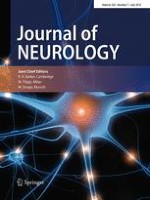01-07-2016 | Original Communication
Independent impact of infections on the course and outcome of status epilepticus: a 10-year cohort study
Published in: Journal of Neurology | Issue 7/2016
Login to get accessAbstract
Infections are frequent in patients with status epilepticus (SE). It remains unclear if infections merely reflect severity of the underlying illness or if they independently predict unfavourable course and outcome. We sought to determine if infections diagnosed within 48 h from SE onset are independent predictors of poor course and outcome and if their effect is modified by clinical characteristics. From 2005 to 2014, pertinent clinical data, microbiology, death, return to functional baseline, and unfavourable outcome in survivors were assessed in SE patients treated in the intensive care units (ICU) of an academic medical care center. Among 352 consecutive patients, 81 (23 %) were diagnosed with infections at SE onset. In-hospital mortality was higher in patients with infections (26 %) compared to 10 % in patients without infections (p < 0.001). Infections at SE onset increased the odds ratios (OR) for prolonged ICU (OR = 4.1, 95 %CI 1.87–6.74) and hospital stay (OR = 5.4, 95 %CI 1.24–9.63), refractory SE (OR = 3.1, 95 %CI 1.79–5.34), prolonged mechanical ventilation (OR = 3.8, 95 %CI 2.15–6.79), no return to functional baseline (OR = 2.1, 95 %CI 1.10–4.02), unfavourable outcome in survivors (OR = 2.0, 95 %CI 1.02–3.81), and death (OR = 2.5, 95 %CI 1.28–4.99). All associations were independent of confounders and without significant effect modification by age, level of consciousness, types and severity of SE, and etiologies. In addition, the number of infections increased the probability of unfavourable course and outcome. Infections at SE onset are frequent and associated with prolonged medical care, treatment refractory SE, higher morbidity and mortality independently of potential confounders calling for the evaluation of treatment strategies.





